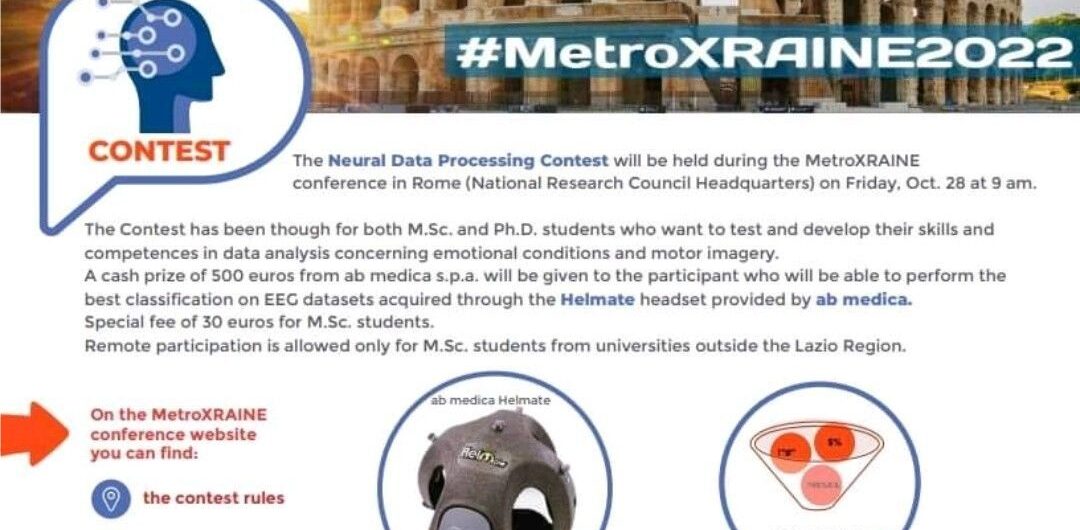 News
News
 News
News
 News
News
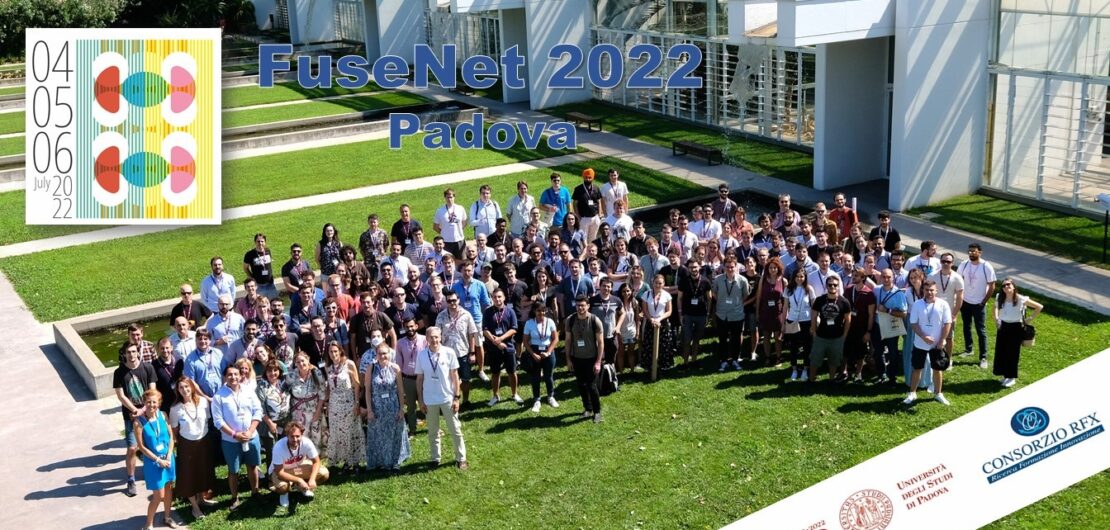 News
News
On 4th-6th July, the FuseNet PhD Event 2022 took place in Padua, Italy. 131 PhD students coming from 23 countries and 44 different institutes and universities, including the University of Tuscia in Viterbo, participated and animated the FuseNet PhD Event 2022. After two years, it finally took place in a live format again, in the amazing venues of University and Orto Botanico of Padua. The event was hosted by the University of Padua and Consorzio RFX and it was the place where European fusion PhD students meet and interact with affirmed international researchers in the field of Nuclear Fusion, aiming to strengthen and expand the fusion research network.
University of Tuscia was present at the event with 8 PhD students, who presented their research activities during poster sessions over the 3 days.
During three days, participants had the possibility to listen interesting talks of different important personalities in the fusion research as: Elena Righi (Head of Unit Euratom, European Commission), Piero Martin (professor at University of Padova), Elena de la Luna (researcher at LNF CIEMAT), Simone Peruzzo (Head of Technology and Engineering at Consorzio RFX), Gianluigi Serianni (researcher at Neutral Beam Test Facility), and Chiara Bustreo (project leader of the EUROfusion Socio Economic Studies). Three guided tours were organized to explore some important places of Padova: Palazzo Bo, Orto Botanico and Consorzio RFX. Furthermore, different oral sessions and poster sessions animated the days and permitted the students to know a lot about different topics related to the Nuclear Fusion world. To conclude social dinners entertained participants.
Different topics were exposed during the poster sessions from University of Tuscia. A brief presentation is reported.
Finally, a work about the first wall sacrificial limiters inside the vacuum vessel that represents the last protection resource to prevent the reactor wall from excessive damage was presented. The integration of W-lattices in the architecture of such components can allow to meet their conflictual requirements: through a prompt vapour shielding formation, these can ensure effective thermal decoupling between plasma and heat sink during disruptions and provide effective exhaust of the nominal thermal load during stationary operation.
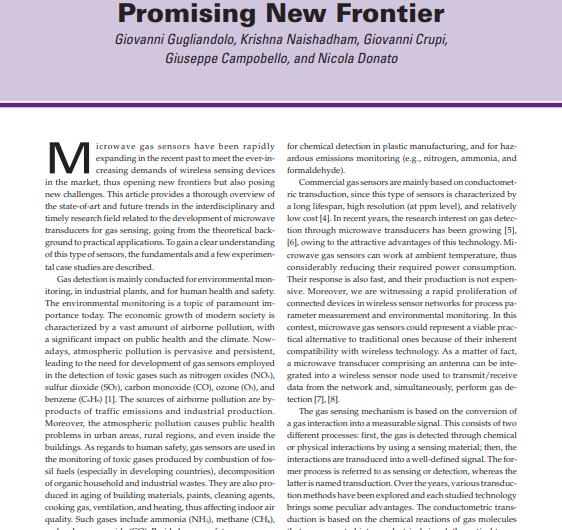 News
News
The research of new typologies of gas sensors with improved detection performance has resulted in a wide adoption of gas sensors in different fields. The technology development has led to the introduction of low-cost, compact gas sensors with improved performance in detection process. The major purposes of gas detection are environmental monitoring, human health monitoring and industrial plant safety. Today, environmental monitoring is a subject of utmost importance. A substantial amount of airborne pollution, which has a negative influence on both public health and the climate, is a hallmark of the economic prosperity of contemporary society. The need for the development of gas sensors used in the detection of harmful chemicals such nitrogen oxides, sulfur dioxide, carbon monoxide, ozone, and benzene has become more pressing as a result of today’s pervasive and persistent atmospheric pollution. Additionally, concerns with public health are brought on by atmospheric pollution in metropolitan areas, rural areas, and even inside houses.
Moreover, gas sensors are employed in medical applications. As an example, oxygen sensors are used in the oxygen therapy, while ammonia sensors have been employed to identify chronic renal illness. Finally, gas sensors are frequently used in industrial environment, including hazardous emissions monitoring, chemical detection in the production of plastics, and in the chain of food production and storing.
Commercial gas sensors typically use conductometric transducers because they have a long lifespan, great resolution (at the ppm level), and are relatively inexpensive. Due to the alluring benefits of this technology, interest in research on gas detection using microwave transducers has increased in the last years. Since microwave gas sensors may operate at room temperature, less power is needed to manage them. Moreover, they are characterized by a fast response time.
In such a context, the University of Messina has contributed to researching novel microwave transducers for sensing applications. In particular, the research group held by Prof. Donato (University of Messina, Res4Net member) has proposed several configurations of microwave gas sensors.
A brief review of the latest advances in the development of microwave transducers for gas sensing can be found here
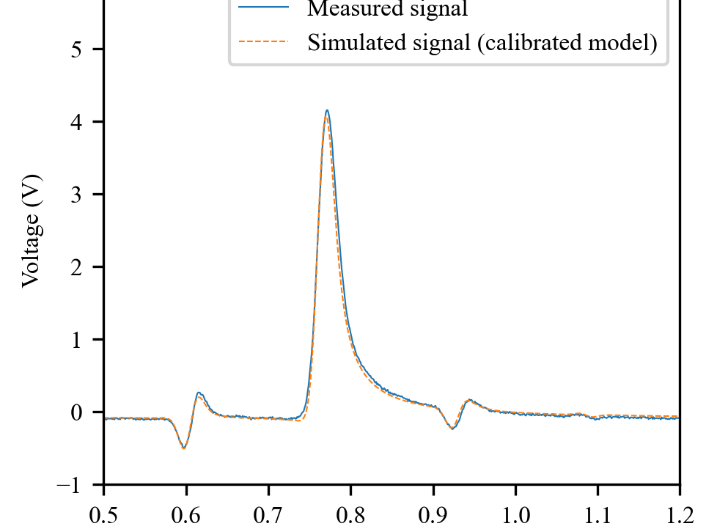 News
News
Methodology: The situation considered is represented in Fig. 1. The cable has total length and contains localized faults, simulated by means of capacitors connected in parallel by means of T-junctions. The capacitors are placed at a distance from the beginning of the cable and have capacitance . The stimulus signal is generated by an Agilent 33250A AWG, while the TDR signals are acquired using a LeCroy Waverunner-2 LT262 oscilloscope. A Gaussian pulse is used as the stimulus signal.
The neural network employed was inspired by single-shot CNNs (YOLOs) for object detection. These neural networks consist of a sequence of convolutional and pooling layers. Since in the present case signals are processed in the time domain, 1D convolutional layers are used, rather than 2D ones, as the basic component of the model. The input of the first layer is the measured TDR signal, the output of the last layer is an matrix ( is number of cells into which the length of the line is divided), which identifies position, class, impedance and probability of the fault.
The training set of the neural network is obtained by generating simulated reflectograms under various fault conditions. The simulator uses the primary RCGL parameters of the line, which were identified using the stepped-frequency waveform reflectometry (SFWR) developed in [3]. This technique can be used easily for long cables and using low-cost, portable instrumentation. The identification obtained is quite accurate, as shown in Fig. 2.
Results: Tables I and II summarize some of the results obtained. In particular, Table I reports some results obtained on cables with four capacitive faults and shows the remarkable accuracy with which they are localized. The quantification may appear less accurate; however, it must be said that the capacities reported are simply nominal capacities of the capacitors used to simulate the fault. These capacities have quite high tolerances per se and are not related to the frequency range of the TDR signal used in the test. Table II reports statistics on the overall measurement errors in all the experiments conducted (six with a single failure, six with two failures, two with three failures, two with four failures), in terms of RMS error and mean absolute percentage error (MAPE).
Conclusions: The experiments showed that the proposed method is remarkably accurate, as well as being very general. It can be applied to the localization and characterization not only of faults in cables, but also of points of discontinuity in distributed sensitive elements.
References:
[1] Scarpetta, M.; Spadavecchia, M.; Adamo, F.; Ragolia, M.A.; Giaquinto, N. Detection and Characterization of Multiple Discontinuities in Cables with Time-Domain Reflectometry and Convolutional Neural Networks. Sensors 2021, 21, 8032. doi: 10.3390/s21238032 .[2] M. Scarpetta, M. Spadavecchia, G. Andria, M. A. Ragolia and N. Giaquinto, “Analysis of TDR Signals with Convolutional Neural Networks,” 2021 IEEE International Instrumentation and Measurement Technology Conference (I2MTC), 2021, pp. 1-6, doi: 10.1109/I2MTC50364.2021.9460009.[3] N. Giaquinto, M. Scarpetta and M. Spadavecchia, “Algorithms for Locating and Characterizing Cable Faults via Stepped-Frequency Waveform Reflectometry,” in IEEE Transactions on Instrumentation and Measurement, vol. 69, no. 9, pp. 7271-7280, Sept. 2020, doi: 10.1109/TIM.2020.2974110..
Table I. Estimation results for real cables with four capacitive faults.
| Experiment 1 | Experiment 2 | ||
| Nominal | Estimated | Nominal | Estimated |
Length of the cable (m) | 143 | 142.96 | 143 | 142.96 |
Position of fault 1 (m) | 50 | 49.87 | 50 | 49.88 |
Position of fault 2 (m) | 65 | 65.12 | 65 | 65.03 |
Position of fault 3 (m) | 115 | 114.93 | 115 | 114.95 |
Position of fault 4 (m) | 131 | 131.40 | 131 | 131.32 |
Capacity of fault 1 (pF) | 107 | 117 | 107 | 115 |
Capacity of fault 2 (pF) | 217 | 214 | 152 | 165 |
Capacity of fault 3 (pF) | 404 | 436 | 309 | 323 |
Capacity of fault 4 (pF) | 450 | 441 | 450 | 439 |
Table II. Estimation errors obtained for experimental signals.
Cable length error | Fault position error | Fault capacity error |
| ||||||||
RMSE (m) | MAPE | RMSE (m) | MAPE | RMSE (pF) | MAPE |
| |||||
0.12 | 0.10% | 0.13 | 0.22% | 14 | 4.3% | ||||||

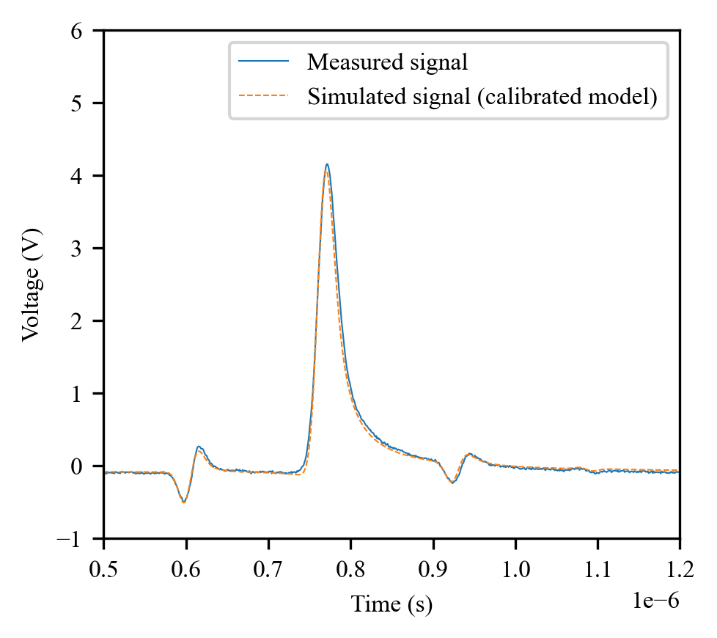
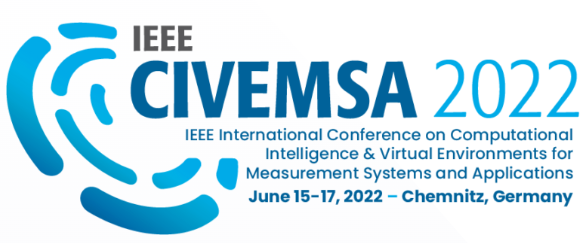 News
News
The IEEE International Conference on Computational Intelligence and
Virtual Environments for Measurement Systems and Applications (CIVEMSA June-2022) was held in Chemnitz from 15 to 17 June 2022.
It was dedicated to all aspects of computational intelligence, virtual environments, and human-computer interaction technologies for measurement systems and related applications.
Prof. Pasquale Arpaia of the Res4Net held the opening Keynote focused
on active, reactive, and passive Brain Computer Interface for 4.0
applications in the medical and industrial fields.
In 1996, the IEEE Instrumentation and Measurement Society organized the IEEE Workshop on Emerging Technologies in Instrumentation and Measurement to explore the theoretical insights and the practical use of innovative technologies for the area of measurement systems and related applications. Two main areas were considered: computational intelligence and virtual environments.
The workshop evolved, with different names, in each of the subsequent years by focusing on various aspects of these areas and becoming a symposium.
In 2003 the organizers realized that the topics and the communities interested in this workshop were diverging and therefore started two conferences, each focusing on one of the two areas mentioned above: the IEEE International Conference on Computational Intelligence for Measurement Systems and Applications (IEEE CIMSA) and the IEEE International Conference on Virtual Environments, Human-Computer Interfaces, and Measurement Systems (IEEE VECIMS). IEEE CIMSA was sponsored by the IEEE Computational Intelligence Society and the IEEE Instrumentation and Measurement Society, while IEEE VECIMS was sponsored only by the IEEE Instrumentation and Measurement Society. The two meetings were held in parallel in the same location, to exploit synergies in local arrangement expenses and efforts, even though the communities started clearly to separating one from the other. These conferences constituted two successful series which reached the tenth edition in 2012.
In the past few years, however, the organizers noticed a convergence of the two technological areas of these conferences. For this reason, the Steering Committees of the two conferences unanimously voted to terminate the two series and merge the meetings in a new conference series to maximize the benefits for the communities: IEEE International Conference on Computational Intelligence and Virtual Environments for Measurement Systems and Applications (IEEE CIVEMSA).
Past Conference Listings & Websites
Virtual
2021 IEEE International Conference on Computational Intelligence and Virtual Environments for Measurement Systems and Applications
Virtual
2020 IEEE International Conference on Computational Intelligence and Virtual Environments for Measurement Systems and Applications
Tianjin, China
2019 IEEE International Conference on Computational Intelligence and Virtual Environments for Measurement Systems and Applications
Ottawa, Canada
2018 IEEE International Conference on Computational Intelligence and Virtual Environments for Measurement Systems and Applications
Annecy, France
2017 IEEE International Conference on Computational Intelligence and Virtual Environments for Measurement Systems and Applications
Budapest, Hungary
2016 IEEE International Conference on Computational Intelligence and Virtual Environments for Measurement Systems and Applications
Shenzhen, China
2015 IEEE International Conference on Computational Intelligence and Virtual Environments for Measurement Systems and Applications
Ottawa, Canada
2014 IEEE International Conference on Computational Intelligence and Virtual Environments for Measurement Systems and Applications
Milan, Italy
2013 IEEE International Conference on Computational Intelligence and Virtual Environments for Measurement Systems and Applications
Tiajin, China
2012 IEEE International Conference on Computational Intelligence for Measurement Systems and Applications
Tiajin, China
2012 IEEE International Conference on Virtual Environments, Human-Computer Interfaces and Measurement Systems
Ottawa, Canada
2011 IEEE International Conference on Computational Intelligence for Measurement Systems and Applications
Ottawa, Canada
2011 IEEE International Conference on Virtual Environments, Human-Computer Interfaces and Measurement Systems
Taranto, Italy
2010 IEEE International Conference on Computational Intelligence for Measurement Systems and Applications
Taranto, Italy
2010 IEEE International Conference on Virtual Environments, Human-Computer Interfaces and Measurement Systems
Hong Kong, China
2009 IEEE International Conference on Computational Intelligence for Measurement Systems and Applications
Hong Kong, China
2009 IEEE International Conference on Virtual Environments, Human-Computer Interfaces and Measurement Systems
Istanbul, Turkey
2008 IEEE International Conference on Computational Intelligence for Measurement Systems and Applications
Istanbul, Turkey
2008 IEEE International Conference on Virtual Environments, Human-Computer Interfaces and Measurement Systems
Ostuni, Italy
2007 IEEE International Conference on Computational Intelligence for Measurement Systems and Applications
Ostuni, Italy
2007 IEEE International Conference on Virtual Environments, Human-Computer Interfaces and Measurement Systems
La Coruna, Spain
2006 IEEE International Conference on Computational Intelligence for Measurement Systems and Applications
La Coruna, Spain
2006 IEEE International Conference on Virtual Environments, Human-Computer Interfaces and Measurement Systems
Giardini Naxos – Taormina, Italy
2005 IEEE International Conference on Computational Intelligence for Measurement Systems and Applications
Giardini Naxos – Taormina, Italy
2005 IEEE International Conference on Virtual Environments, Human-Computer Interfaces and Measurement Systems
Boston, MA, USA
2004 IEEE International Conference on Computational Intelligence for Measurement Systems and Applications
Boston, MA, USA
2004 IEEE International Conference on Virtual Environments, Human-Computer Interfaces and Measurement Systems
Lugano, Switzerland
2003 IEEE International Conference on Computational Intelligence for Measurement Systems and Applications
Lugano, Switzerland
2003 IEEE International Conference on Virtual Environments, Human-Computer Interfaces and Measurement Systems
Girdwood, AK, USA
2002 IEEE International Symposium on Virtual and Intelligent Measurement Systems
Budapest, Hungary
2001 IEEE International Workshop on Virtual and Intelligent Measurement Systems
IEEE VIMS 2000
Annapolis, MD, USA
2000 IEEE International Workshop on Virtual and Intelligent Measurement Systems
IEEE VIMS 1999
Venice, Italy
1999 IEEE International Workshop on Virtual and Intelligent Measurement Systems
IEEE ETIMVIS 1998
St. Paul, MN, USA
IEEE International Workshop on Emergent Technologies, Intelligent Measurement and Virtual System for Instrumentation and Measurement
IEEE ETVSIM 1997
Niagara Falls, Canada
IEEE International Workshop on Emergent Technologies and Virtual System for Instrumentation and Measurement
IEEE ETIM 1996
Como, Italy
IEEE International Workshop on Emergent Technologies for Instrumentation and Measurement
 News
News
Two basic tasks in the perioperative period are i) surgery and ii) patient monitoring and care. The outcome of diagnosis and surgical interventions can be improved by means of electromagnetic tracking systems (EMTSs) [1], widely used in surgical navigation. They employ very small EM sensors, which measure the magnetic field produced by a field generator, thus accurately estimating the pose of the instrument in the operative scenario. Moreover, in the pre- and postoperative phase, monitoring the flow rate of the fluid being administered to patients is very important for their safety. Hence, our proposed system [2] uses a camera to film the intravenous (IV) drip infusion kit and a deep learning-based algorithm to detect and count drops. The usage of a camera as a sensing element is safe in medical environments and can be easily integrated into current health facilities.
1. Example of Application field: Health, Tracking
2. Example of Activity: Monitoring, Diagnosis, Surgery
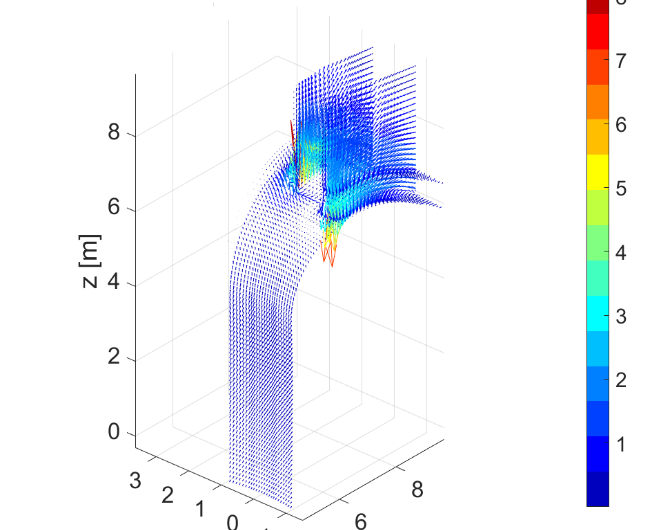 News
News
A new scientific paper has been published by the UNITUS Nuclear Fusion Research team, concerning the development of a new multiphysics and multicode approach aimed at 3D detailed evaluation of the electro-magnetic loads experienced by the tokamak structures both in normal and off-normal conditions, e.g. plasma disruptions [2].
Plasma disruptions are one of the major concerns in the design phase of fusion devices. The very high eddy and halo currents, induced in the passive structures, crossing the electromagnetic field generate huge loads. According to [3], plasma disruptions are usually classified depending on the position of the plasma column at the Thermal Quench (TQ), as Major Disruptions (MDs) and Vertical Displacement Events (VDEs). A Vertical Displacement Event (VDE) begins with a loss of position control that develops before any appreciable cooling of the plasma core. The occurrence of undesired plasma perturbations such as Edge Localized Modes (ELMs), unforeseen H-L and L-H transitions, minor disruptions (mDs), etc., that are strongly connected to variations of plasma internal parameters and, consequently, to plasma displacements, are among the possible causes of such instabilities [4]. During a VDE, in an initial phase, the plasma moves vertically away from its equilibrium position and starts to induce current in the passive structure mainly by its movement. In this phase, the plasma moves towards the wall, reducing progressively its area, typically with a little change in the total plasma current, since the plasma thermal energy is still present. Then, when the plasma starts to significatively interact with the structures or when plasma reaches a critical value of the safety factor, conditions for a rapid growth of MHD activity inevitably arise and the TQ occurs. As a consequence of the TQ, the ensuing increase in plasma resistivity produces the Current Quench (CQ) phase.
During the plasma evolution, especially during the TQ and CQ, toroidal and poloidal eddy currents are induced in the metallic components, respectively due to the dynamic effect of plasma Poloidal Field Variation (PFV) and Toroidal Field Variation (TFV). The plasma time evolution and the effects of such events on the passive structures can estimated through 2D axisymmetric codes, such as MAXFEA. However, the presence of 3D structures (e.g. ports, divertor, etc.) generates non-trivial currents paths and distribution of EM loads. In order to estimate the 3D effects, MAXFEA has been used in combination with ANSYS, allowing to estimate both PFV and TFV consequences on the 3D model. Considering the DEMO PMI configuration and a fast upper Vertical Displacement Event (VDE), the procedure was successfully benchmarked, comparing the MAXFEA and APDL results, in a case where the 3D Vacuum Vessel (VV) was considered axisymmetric. The methodology has been then exploited and applied to estimate the EM load distribution on the real DEMO VV.
[1] Maviglia et al., “Integrated design strategy for EU-DEMO first wall protection from plasma transients,” Fusion Eng. Des., vol. 177, no. February, p. 113067, Apr. 2022.[2] Lombroni et al., “Using MAXFEA code in combination with ANSYS APDL for the simulation of
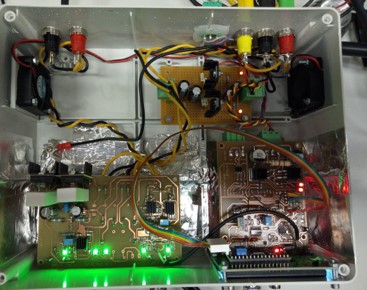 News
News
In recent years, different areas have been explored, technical meetings have been organized (including special sessions in I2MTC, our Society’s main conference and workshops) to broaden analysis and discussion, and related communities have been aggregated in our Society. The committee also organized special sessions at other IEEE conferences to draw attention to specific areas of incubation and promote instrumentation and measurement principles, methods and technologies to other communities. Finally, the committee organized special issues in the IEEE Transactions on Instrumentation and Measurement, the I&M journal, and other emerging area journals. These efforts have led to the creation of some technical committees in our company, such as intelligent measurement systems and fault tolerant measurement systems. In addition, the TC-6 also inspired the creation of other technical groups and committees.
The TC-6 was recently launched with a focus on autonomous vehicle measurement and quantum computing technologies. Autonomous vehicles (such as those that fly or are underwater) have become a popular and cost-effective tool for many sensing and measurement applications (such as infrastructure inspection and testing, environmental monitoring and mariculture or agriculture), combining time and space coverage and accessibility unattainable with other technologies. A new generation of rovers are engaged in space missions. There is a demand for the development of new and advanced instruments, as well as for their calibration and testing. Astronomical Observation Instruments That Measure the Earth ‘
For quantum technologies, TC-6 began studying to determine the main technical areas where experience and expertise in our measurement community could be useful to more efficiently support the development and implementation of quantum systems. Recently, there have been breakthroughs in the accurate measurement of atomic qubit states, which is a key step in the development of quantum computers.
The objectives of this Committee are:
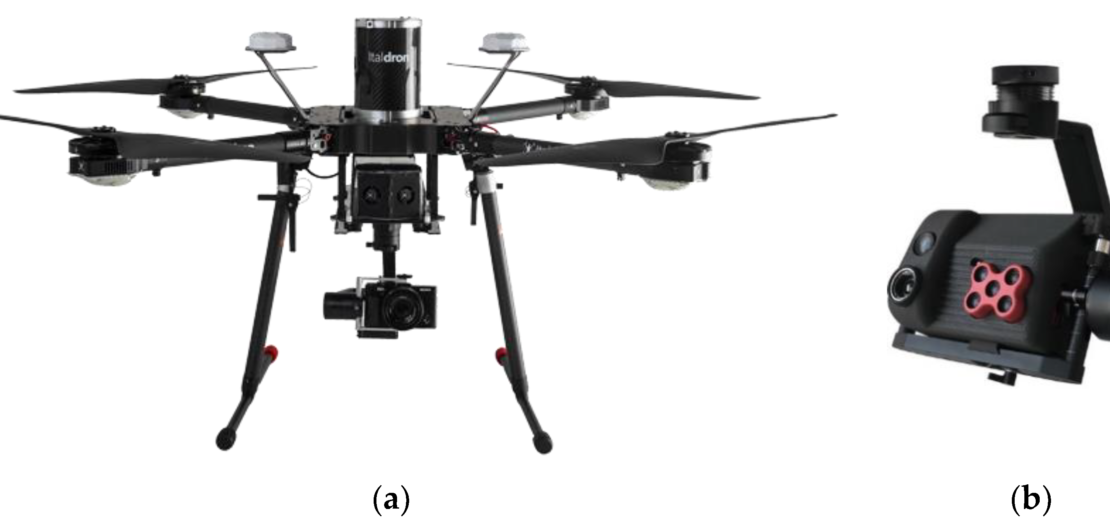 News
News
 News
News
In the last decade, the sensors market has witnessed an abrupt rising adoption rate in the wake of a variety of factors, including widespread IoT applications, growing wireless network demand, and rising demand for high accuracy sensors and more efficient and reliable measurement systems. Sensors are used for a wide range of applications such as environmental monitoring, agriculture, healthcare, and human-machine interaction. With the increasing advances of sensor technologies in a wide range of applications, sensing devices have become more and more pervasive and capable. For instance, the number of sensors included in the latest generation of smartphones is huge: from the touchscreen and fingerprint sensors to the heart rate sensor passing through the Global Positioning System (GPS) sensor. Their combination enables users to interact with the device, support their everyday activities, and monitor their state of health. Likewise, wearables equipped with sensors (e.g., smartwatches and smart bands) have also become an increasingly popular option for monitoring health and fitness.
Additionally, several factors have also resulted in the surging demand for sensors, such as increasing Internet connectivity worldwide, growing industrial automation, and growing requirements for improved efficiency in industries. The global sensing market is thus expected to experience strong growth in the next few years. The market is also expected to gain prominence over the forthcoming years owing to the rise in the integration of IIoT and 5G networks.
In this context, the research of novel sensors and sensor-based measurement systems represents one of the most important challenges for the development of new and advanced applications.
This is the main topic of the Sensors Journal (MDPI) Special Issue (SI) entitled “Sensors and Sensor-Based Measurement Systems: Design, Development and Challenges” and edited by Prof. Nicola Donato from the University of Messina (Res4Net member) in collaboration with Dr. Luca Lombardo (Politecnico di Torino) and Dr. Giovanni Gugliandolo (University of Messina).
The scope of this SI is to publish high-quality research papers as well as review articles including, but not limited to, design, development, characterization, and employment of sensors and sensor-based measurement systems. New application scenarios, as well as sensor technology and sensor fusion and measurement issues, are also topics of interest.
The SI is open and will accept paper proposals up to 20 January 2023.
For more information visit the official SI page